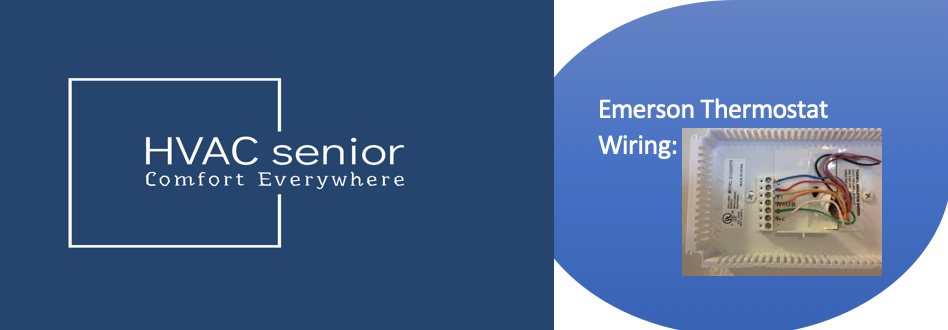No sooner does winter begin than homeowners search for efficient, cost-effective ways of staying warm without breaking the bank. Ventless gas heaters are becoming their go-to choice for this. They are tiny but efficient and don’t require complicated installation or ducts. But they also raise issues of safety, humidity, and indoor air quality.
In this in-depth guide, you’ll learn all about ventless gas heaters—how they work, their pros and cons, best installation methods, and how to stay safe while warming up under them.
What Is a Ventless Gas Heater?
A ventless gas heater is also known by another name: vent-free or unvented gas heater. A space heater, it warms the room with natural gas or propane with no chimney, flue, or exhaust vent. While traditional gas furnaces vent combustion gases outdoors, ventless models keep all the heat—and all the exhaust—in the room.
In order to make this safe, modern ventless heaters are engineered for nearly perfect combustion. They burn fuel so cleanly that only small quantities of carbon dioxide and water vapor are released. Almost all heaters have an oxygen depletion sensor (ODS) that will shut off the heater automatically if oxygen levels get too low.
How a Ventless Gas Heater Works
Vent-free gas heaters are designed to efficiently transfer heat—99.9% of fuel energy is transferred to usable heat. The operation of how they do it step by step is as follows:
- Fuel Source Hookup: Heater connected to a propane tank or natural gas line.
- Ignition: Many use a push-button piezo igniter to ignite the start of the flame.
- Combustion: Gas combusted in a sealed burner or open flame compartment, producing heat.
- Heat Output: Heat radiates out directly into the space or returns via convection.
- Safety Monitoring: There are sensors incorporated to track oxygen and gas flow to prevent harm.
Since there is no venting involved, everything heats indoors—thus these heaters are highly energy-efficient and perfect for areas where it isn’t possible to install ductwork.
Also read: Mobile home water heater.
Types of Ventless Gas Heaters
There are various types of ventless gas heaters, and each is suitable for a different heating need and room setup. Understanding what they are makes it simpler to select the correct one for your home.
1. Blue Flame Ventless Gas Heater
Blue flame heaters work by heating the air first. The warm air rises naturally, circulates, and radiates heat evenly throughout the room. They work best for rooms that are well-insulated and rooms with standard ceiling height.
Best used: In bedrooms, living rooms, or offices that have good insulation.
2. Infrared (Radiant) Ventless Gas Heater
Infrared or radiant heaters warm objects and people directly rather than warming air. They emit infrared rays that transfer heat efficiently to furniture and people nearby.
Best used: In open rooms with inadequate insulation, garages, workshops, or drafty rooms.
3. Wall-Mounted Ventless Gas Heater
These wall-mount heaters save valuable floor space. They are equipped with thermostats or fan blowers for effective heat distribution.
Perfect for: Cozy flats, cabins, or small rooms that don’t have much extra space to accommodate full-time heaters.
4. Freestanding or Portable Ventless Gas Heater
Portable models can be moved from one room to another or used as temporary heaters. They come with wheels and safety devices for added convenience.
Perfect for: Rental homes, basement spaces, or rooms without a permanent heating system.
Advantages of Ventless Gas Heaters
Ventless gas heaters save energy, money, and time. Listed below are their major advantages:
✅ 1. Nearly Perfect Efficiency
No vent or chimney means no loss of heat outside. You get nearly 100% of the heat input from the fuel.
✅ 2. Simple Installation
Setup is quick—no vent pipes or ducts to install. All you require is a gas connection and stable platform or wall mount.
✅ 3. Low Operating Cost
These heaters consume less fuel and burn almost all of it as usable heat, which is energy-saving compared to electric heaters or a central system.
✅ 4. Space-Saving and Versatile
Narrow design, which makes them well-suited for small homes, cabins, garages, or workshops where space is limited.
✅ 5. Instant On Heat
Ventless heaters provide instant heat, as compared to central systems that take time to transfer warm air via ducts.
✅ 6. Standby Heat Source
During loss of power, most models can operate without electricity—perfect for emergency heat.
Disadvantages of Ventless Gas Heaters
Even with their benefits, ventless gas heaters do have some significant disadvantages to keep in mind before installing a unit.
⚠️ 1. Moisture Buildup
Propane or natural gas combustion produces water vapor as a waste product. Without proper ventilation, this moisture is trapped inside and can lead to window condensation or mold infestations in humid environments.
⚠️ 2. Air Quality Concerns
Though efficient, these heaters release tiny amounts of carbon dioxide and nitrogen dioxide into the atmosphere. Poor ventilation can leave the air oxygen-starved.
⚠️ 3. Limited Room Use
Safety codes will seldom permit ventless gas heaters for use in bedrooms, bathrooms, or small rooms, especially without proper circulation.
⚠️ 4. Not for Whole-House Use
They’re not designed as a primary source of heat for large homes.
⚠️ 5. Regulatory Restrictions
Some U.S. states and cities restrict or ban vent-free gas heaters due to safety concerns. Verify local building codes before installing.
Ventless Gas Heater Safety Tips
Proper use and maintenance make ventless heaters safe and reliable. Use these crucial safety tips:
- Install a Carbon Monoxide Detector in the room where the heater will be placed.
- Supply Good Ventilation—slightly open a window or door while in use.
- Check Oxygen Deletion Sensor (ODS) every year during each heating season.
- Never Leave Heater On Overnight or unattended.
- Keep Flammable Objects away from the heater surface.
- Clean Unit Frequent, to prevent dust buildup.
- Use the Right Fuel Type—only propane or natural gas specified by the manufacturer.
- Have system serviced annually by a certified technician.
Ventless vs. Vented Gas Heaters: Which Is Better?
| Feature | Ventless Gas Heater | Vented Gas Heater |
| Installation | Easy, no venting required | Requires flue or chimney |
| Efficiency | 99–100% | 70–85% (heat loss through vent) |
| Air Quality | May affect indoor air | Exhaust gases released outdoors |
| Moisture Output | Adds humidity | Removes moisture |
| Cost | Lower purchase & installation cost | Higher due to venting |
| Ideal Use | Supplemental or room heating | Whole-house heating |
If efficiency and ease of use are prioritized, a ventless gas heater is an excellent choice. But if indoor air quality and long-term comfort are key issues, a vented system would be a safer bet.
Where to Use Ventless Gas Heaters
Ventless gas heaters are suitable for installation in most living rooms and business establishments:
- Living rooms – added heat for snuggling up on the couch
- Garages and workshops – zone heating for cold months
- Basements – immediate heat without duct work installation
- Cabins and cottages – off-grid warmth without hassle
- Small homes – affordable and space-saving
- Avoid installing them in bedrooms, bathrooms, and poorly ventilated areas.
Maintenance and Troubleshooting
Regular maintenance guarantees your ventless gas heater works safely and efficiently year-round.
Routine Maintenance Ideas
- Inspect burner and pilot light for dust or soot.
- Clean outer surfaces for dust.
- Check ODS sensor and ignition system annually.
- Use soapy water to detect gas leaks—never an open flame.
- Change igniter or thermostat batteries if needed.
- Yellow Flame: Incomplete combustion—clean burner and check oxygen levels.
- Unusual Odor: Possibly a gas leak or dirty unit—cut power right away.
- Low Heat Output: May be caused by blocked air vents or low gas pressure.
If the problem persists, call in a professional technician rather than DIY maintenance.
How to Select the Best Ventless Gas Heater
When buying a ventless gas heater, the following should be considered:
- Fuel Type: Install using natural gas or propane based on availability.
- Heating Capacity: See to it that the BTU rating of the heater matches your room size.
- Thermostat Control: Provides precise temperature control.
- Safety Features: Tip-over protection, ODS, and automatic shut-off.
- Aesthetic Design: Fireplace-type, freestanding, or wall-mount units.
A 10,000–15,000 BTU heater is suitable for small rooms, while 30,000–40,000 BTU units can cover spaces of up to 1,000 square feet.
Are Ventless Gas Heaters Safe?
If installed and used correctly, ventless gas heaters are safe and effective. The key is cautious usage—proper ventilation, proper maintenance, and adherence to safety precautions. New models incorporating oxygen sensors and automatic shut-off units reduce risk.
However, consumers must remember that ventless units emit combustion byproducts within. Ongoing observation of air quality and humid levels are prerequisites for safe, extended use.
Final Thoughts
Ventless gas heaters provide a potent combination of efficiency, convenience, and value. They deliver instant heat, reduce energy bills, and don’t need complicated installation. They’re an intelligent supplemental heating option for homeowners in cold climates or off-grid homes.
But safety always comes first. Use the proper sized heater, offer fresh air ventilation, and keep it in good working condition. If used correctly, a ventless gas heater can heat your home effectively, cozily, and safely for winter.









